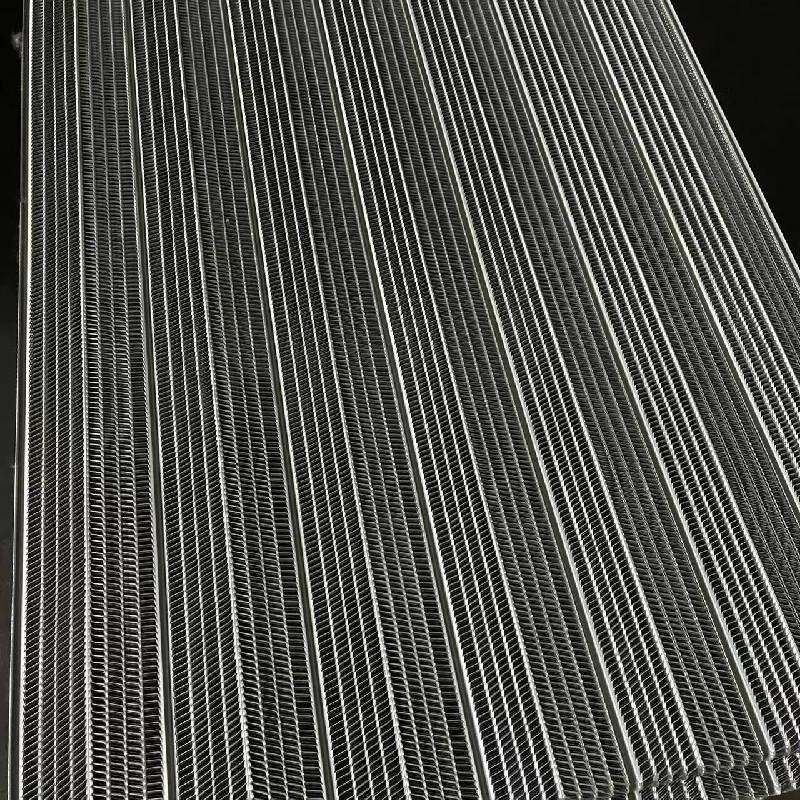
- Mobile Phone
- +8613931874955
- sales@cntcmetal.com
horizontal joint reinforcement for cmu
Horizontal Joint Reinforcement for Concrete Masonry Units (CMUs)
Concrete masonry units (CMUs), commonly referred to as concrete blocks, are widely used in construction due to their strength, durability, and insulating properties. One critical aspect of CMU construction is the reinforcement of horizontal joints, which plays an essential role in ensuring the overall integrity and stability of the masonry structure. This article explores the importance, methods, and benefits of horizontal joint reinforcement in CMU applications.
The Importance of Horizontal Joint Reinforcement
The horizontal joints in a CMU wall assembly are vital points where two adjacent blocks meet. These joints, while designed to be strong, can be vulnerable to various forces, including lateral loads from wind, seismic activity, and thermal expansions. Without proper reinforcement, these joints may crack or become weak over time, compromising the structure's safety and longevity.
Horizontal joint reinforcement serves to enhance the tensile strength of these joints, helping to distribute forces more evenly across the structure. It is particularly vital in multi-story buildings and structures that experience significant lateral loads, as it helps maintain the wall's integrity and prevents failure.
Methods of Reinforcing Horizontal Joints
Several methods are employed for horizontal joint reinforcement in CMUs
1. Steel Reinforcement Bars (Rebar) One of the most common methods is embedding steel rebar within the horizontal joints. Typically, rebar is placed at intervals along the mortar joints, providing a tensile strength that complements the inherent compressive strength of concrete. The bars are often tied together at intersections, ensuring that they work in unison to resist lateral stresses.
2. Wire Reinforcement Concrete masonry wire reinforcement, often made from galvanized steel, can be placed in horizontal joints. These wires are continuous and help to stitch the blocks together, effectively bolstering the masonry against lateral forces. The wires work by taking on tensile loads during movements and preventing horizontal shifts.
horizontal joint reinforcement for cmu

3. Reinforced Mortar Joints Another approach is the use of reinforced mortar, which incorporates additives such as fibers to enhance the mortar's tensile properties. This method can significantly increase the connectivity between the blocks and reduce the likelihood of joint cracking.
4. Specialized Grouts In some cases, grout is used to fill the joints instead of standard mortar. Grouts can be engineered to provide additional strength and stability to horizontal joints, particularly in areas subject to significant environmental stress.
Benefits of Horizontal Joint Reinforcement
Integrating horizontal joint reinforcement in CMUs offers numerous advantages. Firstly, it dramatically enhances the load-carrying capacity of the structure, making it better equipped to withstand external forces like winds or seismic events. Secondly, it improves the overall durability and lifespan of the masonry walls, reducing the need for costly repairs or reinforcements in the future.
Moreover, properly reinforced walls provide better overall energy efficiency. By minimizing air leaks and thermal bridging, they help maintain temperature stability within the building, contributing to lower energy costs.
From an aesthetic standpoint, effective horizontal joint reinforcement allows for the construction of taller and more innovative designs while maintaining structural safety. Architects and builders can explore creative designs without compromising on strength, as well-reinforced walls can effectively support additional loads.
Conclusion
Horizontal joint reinforcement in CMU construction is a fundamental aspect of ensuring structural integrity and safety. By employing methods such as rebar, wire reinforcement, reinforced mortar, and specialized grouts, builders can significantly enhance the performance of masonry walls against lateral loads and other stresses. The benefits of such reinforcements extend beyond safety; they foster energy efficiency and design flexibility, making them indispensable in modern construction practices. As the demand for durable and resilient buildings continues to grow, the importance of effective horizontal joint reinforcement in CMUs will undoubtedly remain at the forefront of architectural and engineering considerations.
share:
-
Yard Sign Stakes: Reliable Guardians of Outdoor SignsNewsAug.04,2025
-
Wall Ties: Invisible Guardians of Building StabilityNewsAug.04,2025
-
Resilient Web: The Super Guardian Power of Concrete MeshNewsAug.04,2025
-
Masonry Accessories: A versatile assistant on building foundationsNewsAug.04,2025
-
Iron Binding Wire: the 'invisible reinforcement specialist' in the fields of architecture and industryNewsAug.04,2025
-
Dynamic Spring: The diverse functions and excellent performance of Wire Tension SpringNewsAug.04,2025
-
Your Source for Concrete Wall Ties and Masonry AccessoriesNewsJul.10,2025



















